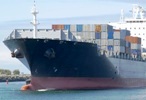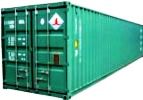| Mubychem Group, established in 1976, is the pioneer manufacturer of Sodium Nitrite, Pharmaceutical, Fragrance & Flavor chemicals in India. Mubychem Group has several manufacturing facilities spread across Gujarat and Mumbai India and world wide contacts and toll manufacturers. We are exporting globally to countries like USA, Canada, Europe, UAE, South Africa, Tanzania, Kenya, Egypt, Nigeria, Uganda, Turkey, Mexico, Brazil, Chile, Argentina, Dubai etc. |
The participating units have one or more accreditations like FDA - GMP approval; ISO-9001 Certified; "REACH"registered; ISO-22000; Kosher Certified;Halal Certified; HACCP. We offer Pure & IP BP USP FCC Food Grade ACS AR Analytical Reagent Grades of Chemicals | |







Sodium Nitrite Manufacturers, MSDS Sheet
Specifications of Sodium Nitrite and Sodiium Nitrate from Manufacturers
Sodium Nitrite BP USP IP ACS Analytical Reagent FCC Grade Manufacturers
Sodium Nitrite MSDS Sheet, Material Safety Data Sheet
1: Section 1: Chemical Product and Company Identification
Synonyms: Nitrous acid, sodium salt
CAS No.: 7632-00-0
Molecular Weight: 69.00
Chemical Formula: NaNO2
Section 2: Composition and Information on Ingredients
Ingredient: Sodium Nitrite
CAS No.: 7632-00-0
Percent: 97 - 100%
Hazardous: Yes
Section 3: Hazards Identification
Potential Acute Health Effects:
Very hazardous in case of eye contact (irritant), of ingestion, of inhalation. Hazardous in case of skin contact (irritant). Slightly hazardous in case of skin contact (permeator). Prolonged exposure may result in skin burns and ulcerations. Over-exposure by inhalation may cause respiratory irritation. Severe over-exposure can result in death. Inflammation of the eye is characterized by redness, watering, and itching.
May be toxic to blood, cardiovascular system, Smooth Muscle. Repeated or prolonged exposure to the substance can produce target organs damage. Repeated exposure to a highly toxic material may produce general deterioration of health by an accumulation in one or many human organs.
Section 4: First Aid Measures
Eye Contact: Immediately flush eyes with plenty of water for at least 15 minutes, lifting lower and upper eyelids occasionally. Get medical attention immediately.
Skin Contact: In case of contact, immediately flush skin with plenty of water. Cover the irritated skin with an emollient. Remove contaminated clothing and shoes. Cold water may be used. Wash clothing before reuse. Thoroughly clean shoes before reuse. Get medical attention.
Inhalation: If inhaled, remove to fresh air. If not breathing, give artificial respiration. If breathing is difficult, give oxygen. Get medical attention immediately.
Ingestion: If swallowed, do not induce vomiting unless directed to do so by medical personnel. Never give anything by mouth to an unconscious person. Loosen tight clothing such as a collar, tie, belt or waistband. Get medical attention immediately.
Section 5: Fire and Explosion Data
Fire: Not combustible, but substance is a strong oxidizer and its heat of reaction with reducing agents or combustibles may cause ignition. Increases the flammability of any combustible material.
Explosion: Contact with oxidizable substances may cause extremely violent combustion. May explode when heated to 537C (1000F) or on severe impact or on contact with cyanides, ammonium salts, cellulose, lithium, potassium plus ammonia, and sodium thiosulfate.
Fire Extinguishing Media: Water or water spray in early stages of fire. Foam may also be used, but avoid the use of multi-purpose dry chemical fire extinguishers where contact with sodium nitrite may occur. Water streams may scatter molten material.
Special Information: In the event of a fire, wear full protective clothing and NIOSH-approved self-contained breathing apparatus with full face piece operated in the pressure demand or other positive pressure mode. Decomposition of sodium nitrite may leave a caustic residue.
Section 6: Accidental Release Measures
Small Spill: Use appropriate tools to put the spilled solid in a convenient waste disposal container.
Large Spill: Remove all sources of ignition. Ventilate area of leak or spill. Wear appropriate personal protective equipment.
Spills: Clean up spills in a manner that does not disperse dust into the air. Use non-sparking tools and equipment. Reduce airborne dust and prevent scattering by moistening with water. Pick up spill for recovery or disposal and place in a closed container.
Section 7: Handling and Storage
Precautions: Keep locked up.. Keep away from heat. Keep away from sources of ignition. Keep away from combustible material. Do not ingest. Do not breathe dust. In case of insufficient ventilation, wear suitable respiratory equipment. If ingested, seek medical advice immediately and show the container or the label. Avoid contact with skin and eyes. Keep away from incompatibles such as reducing agents, combustible materials, organic materials, metals, acids.
Storage: Oxidizer. Hygroscopic. Air sensitive. Keep Sodium nitrite container tightly closed. Keep container in a cool, well-ventilated area. Separate from acids, alkalies, reducing agents and combustibles. See NFPA 43A, Code for the Storage of Liquid and Solid Oxidizers. Do not store above 23C (73.4F).
Section 8: Exposure Controls/Personal Protection
Engineering Controls: Use process enclosures, local exhaust ventilation, or other engineering controls to keep airborne levels below recommended exposure limits. If user operations generate dust, fume or mist, use ventilation to keep exposure to airborne contaminants below the exposure limit.
Personal Protection: Safety glasses. Synthetic apron. Gloves (impervious).
Personal Protection in Case of a Large Spill: Splash goggles. Full suit. Boots. Gloves. Suggested protective clothing might not be sufficient; consult a specialist BEFORE handling this product.
Section 9: Physical and Chemical Properties
Physical state and appearance: Sodium nitrite is solid. (Powdered solid.)
Odor: Odorless.
Taste: Saline. (Slight.)
Molecular Weight: 69 g/mole
Color: White to slightly yellowish.
pH (1% soln/water): 9 [Basic.]
Boiling Point: 320C (608F)
Melting Point: 271C (519.8F)
Critical Temperature: Not available.
Specific Gravity: 2.2 (Water = 1)
Easily soluble in hot water.
Soluble in cold water.
Partially soluble in methanol.
Very slightly soluble in diethyl ether.
Section 10: Stability and Reactivity Data
Stability: It is stable.
Instability Temperature: Not available.
Conditions of Instability: Excess heat, dust generation, ignition sources, exposure to air, combustible materials, incompatible materials, exposure to moist air or water.
Incompatibility with various substances:
Highly reactive with combustible materials, organic materials.
Reactive with reducing agents, metals, acids.
Slightly reactive to reactive with moisture.
Corrosivity: Non-corrosive in presence of glass.
Special Remarks on Reactivity:
Hygroscopic.
Strong oxidizer.
Slowly oxidizes to nitrate in air.
Reacts vigorously with reducing materials.
It is a strong oxidizer and is incompatible with the following: acetanilide, metals as powders, ammonium salts, amino guanidine salts, anti pyrine, Butadiene, chlorates, hypophosphites, activated carbon, iodides, mercury salts, permanganate, phthalic acid, phthalic anydride, sodium amide, sodium disulphite, cyanides (e.g. potassium cyanide, sodium cyanide), sodium thiocyanate, lithium, sulfites, tannic acid, urea, wood, vegetable astringent decoctions, infusions, or tinctures.
Special Remarks on Corrosivity: Not available.
Polymerization: Will not occur.
Section 11: Toxicological Information
Oral rat LD50: 180 mg/kg; inhalation rat LC50: 5500 ug/m3; irritation: eye rabbit: 500 mg/24H mild. Investigated as a tumorigen, mutagen, reproductive effector.
--------\Cancer Lists\ ---------------------------------------
--------------------------- --NTP Carcinogen---
Ingredient ---------------- Known - Anticipated - IARC Category
--------------------------- ----- ----------- -------------
Sodium Nitrite (7632-00-0)- - No ----- No ----------- None
Section 12: Ecological Information
Ecotoxicity: Not available.
BOD5 and COD: Not available.
Products of Biodegradation:
Possibly hazardous short term degradation products are not likely. However, long term degradation products may arise.
Toxicity of the Products of Biodegradation: The products of degradation are less toxic than the product itself.
Section 13: Disposal Considerations
Waste Disposal: Waste must be disposed of in accordance with all regulations.
Section 14: Transport Information
DOT Classification:
CLASS 5.1: Oxidizing material.
CLASS 6.1: Poisonous material.
Identification: : Sodium nitrite UNNA: 1500 PG: III
Special Provisions for Transport: Marine Pollutant
Section 15: Other Regulatory Information
US Federal and State Regulations:
New York release reporting list: Sodium nitrite
Pennsylvania RTK: Sodium nitrite
Massachusetts RTK: Sodium nitrite
New Jersey: Sodium nitrite
California Director's List of Hazardous Substances: Sodium nitrite
TSCA 8(b) inventory: Sodium nitrite
TSCA 12(b) one time export: Sodium nitrite
SARA 313 toxic chemical notification and release reporting: Sodium nitrite
CERCLA: Hazardous substances.: Sodium nitrite: 100 lbs. (45.36 kg)
OSHA: Hazardous by definition of Hazard Communication Standard (29 CFR 1910.1200).
EINECS: This product is on the European Inventory of Existing Commercial Chemical Substances.
WHMIS (Canada):
CLASS C: Oxidizing material.
CLASS D-1A: Material causing immediate and serious toxic effects (VERY TOXIC).
CLASS D-2A: Material causing other toxic effects (VERY TOXIC).
DSCL (EEC):
HMIS (U.S.A.):
Health Hazard: 3
Fire Hazard: 0
Reactivity: 0
Personal Protection: C
National Fire Protection Association (U.S.A.):
Health: 3
Flammability: 0
Reactivity: 1
Specific hazard:
Protective Equipment:
Gloves (impervious).
Synthetic apron.
Wear appropriate respirator when ventilation is inadequate.
Safety glasses.
Section 16: Other Information
Disclaimer:
******************************
Our company provides this Sodium nitrite MSDS information sheet contained herein in good faith but makes no representation as to its comprehensiveness or accuracy. This MSDS sheet is intended only as a guide to the appropriate precautionary handling of the material by a properly trained person using this product. Individuals receiving the information must exercise their independent judgment in determining its appropriateness for a particular purpose.
******************************
Sodium Nitrite manufacturers at:
MUBYCHEM GROUP
CHINCHBUNDER, MUMBAI 400009, INDIA
TEL: (OFFICE) 91-22-23774610, 91-22- 23723564. 91-22-23728264
e-mail: anmol@pcmenergy.com

Copyright and Usual Disclaimer is Applicable.
Global or International Sodium Nitrate and Sodium Nitrite IP BP USP NF ACS FCC Food Grade Suppliers, Exporters, Importers, Manufacturers
If I give you “My Word” Nobody can undo it.
If I sign an “Agreement” my Lawyer will undo it
Perfection is made up of small thing but it is not small.

